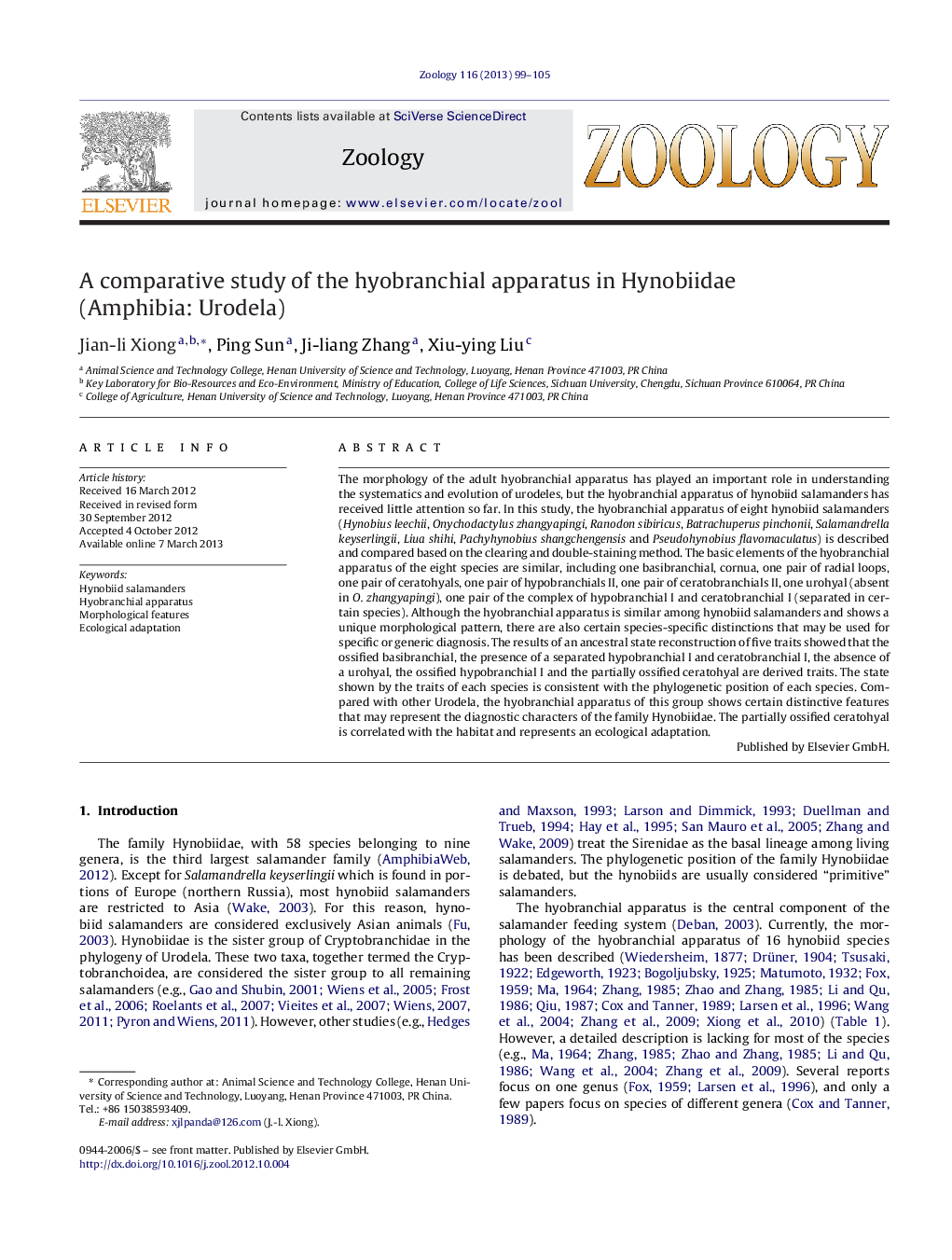| Article ID | Journal | Published Year | Pages | File Type |
|---|---|---|---|---|
| 2791211 | Zoology | 2013 | 7 Pages |
The morphology of the adult hyobranchial apparatus has played an important role in understanding the systematics and evolution of urodeles, but the hyobranchial apparatus of hynobiid salamanders has received little attention so far. In this study, the hyobranchial apparatus of eight hynobiid salamanders (Hynobius leechii, Onychodactylus zhangyapingi, Ranodon sibiricus, Batrachuperus pinchonii, Salamandrella keyserlingii, Liua shihi, Pachyhynobius shangchengensis and Pseudohynobius flavomaculatus) is described and compared based on the clearing and double-staining method. The basic elements of the hyobranchial apparatus of the eight species are similar, including one basibranchial, cornua, one pair of radial loops, one pair of ceratohyals, one pair of hypobranchials II, one pair of ceratobranchials II, one urohyal (absent in O. zhangyapingi), one pair of the complex of hypobranchial I and ceratobranchial I (separated in certain species). Although the hyobranchial apparatus is similar among hynobiid salamanders and shows a unique morphological pattern, there are also certain species-specific distinctions that may be used for specific or generic diagnosis. The results of an ancestral state reconstruction of five traits showed that the ossified basibranchial, the presence of a separated hypobranchial I and ceratobranchial I, the absence of a urohyal, the ossified hypobranchial I and the partially ossified ceratohyal are derived traits. The state shown by the traits of each species is consistent with the phylogenetic position of each species. Compared with other Urodela, the hyobranchial apparatus of this group shows certain distinctive features that may represent the diagnostic characters of the family Hynobiidae. The partially ossified ceratohyal is correlated with the habitat and represents an ecological adaptation.
